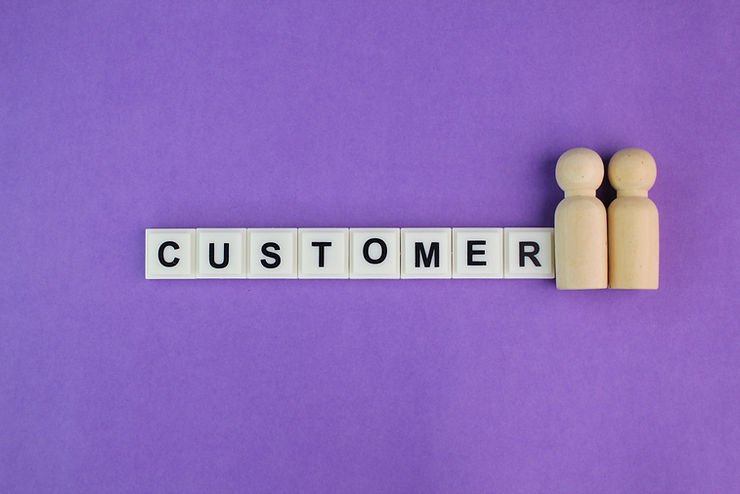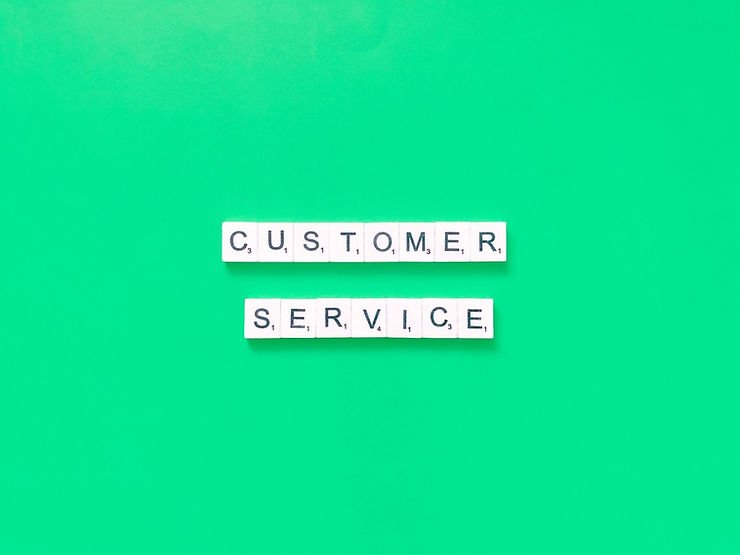Why Must We Use Customer Segmentation in E-commerce Marketing?
- Personalization
- Increase Conversion Rates
- Efficient Marketing Spend
- Improve Customer Retention
- New Customer Acquisition
- Better Product Development
- Create Competitive Advantage
- Enhance Customer Service
Personalization
Segmenting customers has become an indispensable marketing strategy in the competitive business landscape, as it empowers businesses to customize their approach for various customer groups. This customization is achieved by taking into account the distinctive characteristics, preferences, and behaviors of different customer segments. As a result, businesses can provide personalized content, offers, and recommendations tailored to individual needs and expectations, thereby elevating the user experience and amplifying customer satisfaction. This detailed, personalized approach also helps businesses foster stronger relationships with their customers and gain a competitive edge.
To better understand the essence of customer segmentation, consider the myriad ways in which customers can be divided into different groups.
Factors such as demographic information (age, gender, income), geographic location, psychographic traits (lifestyle, interests, values), and behavioral patterns (purchase history, product usage, brand loyalty) can all be used to create meaningful segments.
By harnessing the power of data and analytics, businesses can identify these unique customer groups and develop strategies that resonate with their specific needs and wants.
The benefits of customer segmentation are manifold. For one, it allows businesses to optimize their marketing efforts by targeting the right customers with the right messages. This, in turn, leads to more efficient use of marketing budgets, as businesses can allocate resources to the most profitable or responsive segments. Moreover, customer segmentation enables businesses to identify potential areas of growth and expansion, as well as discover underserved markets that may benefit from tailored products or services.
Picture Perfect: Personalized Homepage Banners

Imagine an online clothing store that caters to a diverse audience with various tastes and preferences. By segmenting customers based on their browsing and purchase history, the store can create personalized homepage banners that showcase products and offers relevant to each customer. A fitness enthusiast might see workout gear and sports accessories, while a fashion-forward shopper would be greeted with the latest trends and seasonal styles. This tailored approach instantly captures the customers’ attention and makes their browsing experience more enjoyable and efficient.
The Exclusive Club: Tailored Email Campaigns

Email campaigns are an excellent way to keep customers engaged and informed about new products, offers, and promotions. But what if you could take it a step further? By segmenting customers based on their interests, purchase patterns, or demographics, businesses can send highly targeted email campaigns. For example, a cosmetics brand could send personalized emails to customers who frequently purchase skincare products, offering exclusive discounts on their favorite items or introducing them to new skincare lines. This level of personalization not only increases the likelihood of conversion but also makes customers feel valued and understood.
The Right Fit: Personalized Product Recommendations
E-commerce businesses often have extensive product catalogs, making it challenging for customers to find what they want. Personalized product recommendations, powered by customer segmentation, can help solve this problem. A furniture store, for instance, could use customer data such as past purchases, browsing history, and stated preferences to recommend items that complement their existing furniture or suit their preferred style. This targeted approach saves customers time and effort, resulting in a more satisfying shopping experience.
Geo-targeted Offers

Segmenting customers based on their location can provide valuable insights into their needs and preferences. An online grocery store could use location data to offer customers region-specific products, recipes, or promotions.
For example, customers in colder climates might receive offers on comforting soups and warm beverages, while those in warmer regions might see promotions for refreshing salads and cold drinks.
This localization makes the shopping experience more relevant and enjoyable for customers.
Celebrating Milestones: Personalized Rewards
Customer segmentation can also help businesses reward their most loyal customers. By segmenting customers based on their purchase frequency or total spending, businesses can create personalized loyalty programs that offer exclusive benefits or discounts.
For example, an online book retailer could offer frequent buyers early access to new releases or special discounts on their favorite genres.
These personalized rewards foster a sense of appreciation and encourage repeat purchases.
Increase Conversion Rates

When businesses focus on targeting specific customer segments with content that is relevant, engaging, and appealing, they substantially increase the likelihood of converting potential customers into paying customers. This targeted approach, which is rooted in understanding the unique needs, preferences, and characteristics of various customer groups, allows businesses to create tailored marketing strategies that resonate with their audience, ultimately leading to higher conversion rates and increased revenue.
To accomplish this, businesses must first invest time and resources in conducting thorough market research and customer analysis. This involves gathering data on their target audience, including demographic information, geographic location, psychographic traits, and behavioral patterns. By analyzing this data, businesses can identify distinct customer segments and develop a deep understanding of their needs, desires, and pain points.
Armed with this knowledge, businesses can create customized marketing campaigns that speak directly to the unique interests and preferences of each customer segment. This might involve crafting compelling ad copy, designing visually engaging images, or producing informative and entertaining videos that resonate with specific audiences. For example, a company selling eco-friendly products might create different campaigns for environmentally-conscious millennials, busy working parents seeking sustainable options, and retirees interested in green living. By tailoring their messaging to each segment, businesses can forge stronger connections with potential customers, making them more likely to take action and make a purchase.
Another important aspect of targeting specific customer segments is personalizing the customer journey. This can be achieved by offering tailored product recommendations, sending personalized emails or notifications, and providing content that is relevant to the customer’s interests or needs. For instance, an online clothing retailer might recommend items based on a customer’s browsing history or offer personalized discounts for frequently purchased products. This level of personalization not only demonstrates that a business understands and values its customers but also creates a seamless and enjoyable shopping experience that encourages conversions.
Efficient Marketing Spend

Customer segmentation plays a critical role in helping businesses allocate their marketing budget more effectively by concentrating resources on the most valuable or responsive customer groups. By understanding the unique needs, preferences, and behaviors of different customer segments, businesses can tailor their marketing strategies to achieve the highest return on investment (ROI) and maximize the impact of their marketing efforts.
To begin, businesses need to collect and analyze customer data from various sources, such as purchase history, browsing behavior, demographic information, and customer feedback. This data enables businesses to identify distinct customer segments and gain insights into their specific needs, preferences, and pain points. By segmenting their customer base, businesses can determine which customer groups are most likely to generate the highest revenue, exhibit the strongest brand loyalty, or respond positively to marketing efforts.
Once businesses have identified their most valuable or responsive customer segments, they can allocate their marketing budget strategically to target these groups more effectively. This focused approach allows businesses to prioritize their marketing efforts based on the potential ROI of each customer segment, ensuring that resources are invested where they will have the greatest impact.
For example, a business may discover that a particular customer segment consistently generates higher average order values or has a higher lifetime value. By allocating a larger portion of the marketing budget to target this segment with tailored campaigns, promotions, and offers, the business can maximize its ROI and drive long-term revenue growth.
Improve Customer Retention
Understanding customer preferences and behavior patterns is essential for businesses that aim to tailor their communications and offers effectively. By doing so, businesses can foster loyalty, reduce churn, and ultimately, create a more sustainable and profitable customer base. This level of personalization and attention to detail allows companies to build strong relationships with their customers, ensuring that they feel valued and appreciated.
To gain insights into customer preferences and behavior patterns, businesses need to collect and analyze a wide range of customer data. This may include demographic information, purchase history, browsing behavior, engagement with marketing campaigns, and customer feedback. By examining this data, businesses can identify trends and patterns that reveal the unique needs, wants, and pain points of different customer segments.
Armed with this knowledge, businesses can create targeted marketing campaigns that resonate with each customer group.

For example, a company that sells outdoor gear might find that one customer segment prefers hiking and camping equipment, while another favors water sports gear.
By tailoring their communications and offers to the specific interests of each segment, the company can create a more relevant and engaging experience for its customers.
Understanding customer behavior patterns allows businesses to anticipate their customers’ future needs and preferences. For instance, a business might notice that a particular customer segment tends to make purchases around specific holidays or seasons. By timing their marketing campaigns and offers accordingly, the business can capitalize on these trends and maximize the likelihood of conversion.
Personalizing customer interactions is another way businesses can leverage their understanding of customer preferences and behavior patterns. By using customer data to customize their communications, businesses can make each interaction feel unique and tailored to the individual customer. This might involve addressing customers by name in emails, offering personalized product recommendations based on browsing history, or providing customized incentives and rewards for loyal customers.
Furthermore, understanding customer preferences and behavior patterns can help businesses improve their product and service offerings. By identifying gaps in their current offerings or uncovering unmet customer needs, businesses can develop new products or services that cater to those specific demands. This not only drives sales and revenue growth but also enhances customer satisfaction, as customers are more likely to find what they are looking for.
Another benefit of understanding customer preferences and behavior patterns is the ability to identify potential areas of customer dissatisfaction and address them proactively.
For example, a business may notice that a particular customer segment consistently experiences difficulties with a specific aspect of its product or service.
By addressing these issues and making improvements, the business can demonstrate its commitment to customer satisfaction and reduce the likelihood of churn.
New Customer Acquisition

Identifying and targeting similar customer segments to the existing customer base is a powerful strategy that can help businesses expand their market share. By focusing on customer groups that share characteristics, preferences, or behaviors with the current customer base, businesses can leverage their existing knowledge and marketing assets to effectively reach and engage these new audiences, ultimately driving growth and increasing profitability.
To execute this approach, businesses first need to analyze their existing customer base and identify the key attributes that define their most valuable or loyal customers. This may involve examining demographic information, such as age, gender, and income level; psychographic traits, including values, interests, and lifestyles; and behavioral patterns, such as purchasing habits, product usage, and brand interactions. By understanding the unique profile of their current customers, businesses can more effectively identify and target similar customer segments.
Once the key attributes of the existing customer base have been identified, businesses can conduct market research to find potential customer segments that share these characteristics. This may involve analyzing industry reports, conducting surveys, or leveraging customer data from third-party sources. By uncovering new customer segments that closely resemble the existing customer base, businesses can tap into markets that are more likely to be receptive to their products, services, and marketing messages.
After identifying these similar customer segments, businesses must develop tailored marketing strategies to effectively reach and engage these new audiences. This may involve creating targeted advertising campaigns, crafting compelling content, or offering personalized promotions and discounts that resonate with the specific needs and preferences of the new customer segments. By leveraging the insights gained from the existing customer base, businesses can ensure that their marketing efforts are relevant and appealing to the new target audience.
In addition to tailoring marketing strategies, businesses should also consider adapting their product or service offerings to better serve the needs and preferences of the new customer segments. This may involve expanding product lines, introducing new service options, or even modifying existing products or services to better align with the expectations of the new audience. By catering to the specific requirements of the new customer segments, businesses can increase the likelihood of conversion and drive growth in market share.
Furthermore, businesses should consider establishing strategic partnerships or collaborations to reach similar customer segments more effectively. For example, a business might partner with a complementary brand or service provider that shares the same target audience. By working together, businesses can pool their resources, knowledge, and customer base to create synergistic marketing campaigns that drive greater results and expand their collective market share.
It’s also crucial for businesses to continuously monitor and analyze the performance of their marketing efforts in targeting new customer segments.
By tracking key performance indicators (KPIs), such as conversion rates, customer acquisition costs, and customer lifetime value, businesses can identify the most successful strategies and tactics and refine their approach accordingly.
This ongoing performance analysis ensures that businesses remain agile and responsive to the needs and preferences of their expanding customer base.
Businesses should also invest in customer relationship management (CRM) systems and data analytics tools to better understand and engage new customer segments. By collecting and analyzing customer data, businesses can gain valuable insights into the behavior patterns, preferences, and needs of the new audience. This information can then be used to further refine marketing strategies, improve product offerings, and enhance the overall customer experience. Businesses should prioritize customer retention and loyalty when targeting similar customer segments. By delivering exceptional customer experiences and maintaining strong relationships with the new audience, businesses can foster long-term loyalty and reduce churn. This not only helps to sustain market share growth but also creates a strong foundation for future expansion.
Better Product Development

Analyzing customer segments is a crucial process that enables businesses to identify gaps in their product offerings and develop products that cater to the needs of different customer groups. By understanding the unique characteristics, preferences, and pain points of various customer segments, businesses can tailor their product development and innovation efforts to create solutions that resonate with their target audience, ultimately driving sales and increasing customer satisfaction.
To effectively analyze customer segments, businesses must first collect and examine a wide range of customer data, including demographic information, psychographic traits, purchase history, and customer feedback. This data can be sourced from multiple channels, such as online surveys, social media interactions, customer reviews, and browsing behavior on the company’s website. By thoroughly analyzing this information, businesses can gain valuable insights into the specific needs and preferences of different customer groups and identify potential areas for product innovation and improvement.
Once businesses have a clear understanding of the needs and preferences of their customer segments, they can begin to identify gaps in their current product offerings. This may involve evaluating the competitive landscape to determine how their products compare to those of their competitors or conducting market research to uncover unmet customer needs. By identifying these gaps, businesses can prioritize their product development efforts and focus on creating solutions that address the specific requirements of their target audience.
In addition to identifying gaps in their current product offerings, analyzing customer segments can also help businesses uncover new market opportunities. By examining trends and patterns in customer behavior, businesses can identify emerging customer needs or preferences that may not yet be met by their existing products. For example, a business might discover a growing interest in eco-friendly products among a specific customer segment, presenting an opportunity to develop and launch a new line of sustainable products that cater to this demand.
When developing new products to address gaps in their product offerings, businesses should consider collaborating with their customers to ensure that the solutions they create truly meet the needs and expectations of their target audience. This might involve conducting customer focus groups, soliciting feedback through online surveys, or hosting customer workshops to gather input on product concepts and prototypes. By involving customers in the product development process, businesses can increase the likelihood that their new products will resonate with their target audience and ultimately drive sales.
Additionally, businesses should consider leveraging advanced analytics and machine learning tools to further refine their understanding of customer segments and identify potential gaps in their product offerings. These technologies can help businesses uncover hidden patterns and trends in customer behavior that may not be immediately apparent through manual data analysis. By incorporating these insights into their product development efforts, businesses can stay ahead of the curve and proactively address the evolving needs and preferences of their customers.
Once businesses have developed new products to address the identified gaps in their product offerings, it is essential to create targeted marketing campaigns that effectively communicate the benefits and value of these products to the relevant customer segments. By crafting compelling messages and promotional materials that specifically address the needs and preferences of the target audience, businesses can increase the likelihood that their new products will be well-received and successful in the market.
Furthermore, businesses should consider offering personalized product recommendations to customers based on their preferences, needs, and browsing behavior. By doing so, businesses can ensure that customers are aware of the new products that are most relevant to them, increasing the chances of conversion and driving sales.
Create Competitive Advantage
Gaining insights into customer preferences and behavior patterns is essential for businesses that aim to differentiate themselves from competitors and stay ahead in the market. By understanding the unique needs, wants, and expectations of their target audience, businesses can develop products, services, and marketing strategies that truly resonate with their customers, creating a competitive edge and ensuring long-term success.
To obtain these valuable insights, businesses must invest in the collection and analysis of customer data. This may involve gathering information from various sources, such as customer surveys, social media interactions, website analytics, and purchase histories. By combining and examining this data, businesses can identify trends, preferences, and patterns that reveal the key drivers of customer satisfaction and loyalty.

For example, a company might discover that one customer segment values convenience and time-saving features, while another prioritizes eco-friendly products and sustainable practices.
By catering to these unique preferences, businesses can differentiate themselves from competitors that offer generic, one-size-fits-all solutions.
Furthermore, understanding customer behavior patterns allows businesses to anticipate and respond to changes in customer needs and preferences proactively. By staying attuned to emerging trends and shifts in consumer behavior, businesses can adapt their products, services, and marketing efforts accordingly, ensuring that they remain relevant and appealing to their target audience. This proactive approach not only helps businesses maintain a competitive edge but also fosters innovation and drives continuous improvement.
In addition to informing product development and marketing strategies, insights into customer preferences and behavior patterns can also help businesses optimize their customer experience. By understanding the factors that contribute to customer satisfaction, businesses can identify areas of improvement and implement changes that enhance the overall customer journey. This may involve redesigning websites for better usability, streamlining customer support processes, or offering personalized recommendations and incentives that make customers feel valued and appreciated.
By focusing on customer preferences and behavior patterns, businesses can also create more effective and targeted marketing campaigns. By understanding what motivates their target audience, businesses can craft compelling messages and promotional materials that speak directly to the needs and desires of their customers. This level of personalization not only increases the likelihood of conversion but also strengthens the connection between customers and the brand, fostering loyalty and long-term engagement.
Gaining insights into customer preferences and behavior patterns can inform pricing strategies and promotional offers. By understanding the factors that influence purchase decisions, businesses can price their products and services more competitively and offer incentives that resonate with their target audience. This not only helps to drive sales and revenue but also positions the business as a customer-centric organization that understands and values the needs of its customers.
Another benefit of understanding customer preferences and behavior patterns is the ability to make more informed decisions about product assortments and inventory management. By identifying the products and services that are most popular among different customer segments, businesses can ensure that they stock the right items and allocate resources more effectively. This not only helps to minimize waste and reduce costs but also ensures that customers can find the products they are looking for, increasing satisfaction and driving repeat business.
Investing in advanced analytics tools and machine learning technologies can further enhance businesses’ understanding of customer preferences and behavior patterns. These tools can help uncover hidden patterns and trends that may not be immediately apparent through manual data analysis, providing deeper insights into customer needs and preferences. By incorporating these findings into their business strategies, companies can stay ahead of the curve and proactively address the evolving needs of their target audience.
Enhance Customer Service

Customer segmentation is a vital strategy that helps businesses provide tailored customer support, ultimately improving customer satisfaction and enhancing brand reputation. By understanding the unique needs, preferences, and expectations of different customer groups, businesses can deliver personalized assistance and communication, ensuring that customers feel valued, understood, and well-served.
To effectively implement customer segmentation, businesses must first gather and analyze a wide range of customer data, including demographic information, purchase history, product usage, and feedback. This data can be sourced from various channels, such as customer relationship management (CRM) systems, social media interactions, customer reviews, and website analytics. By examining this information, businesses can identify patterns and trends that reveal the specific requirements and pain points of different customer segments.
Once businesses have a clear understanding of their customer segments, they can begin to develop tailored customer support strategies that address the unique needs and preferences of each group. This may involve creating specialized support teams with expertise in specific product categories or industries, developing targeted self-service resources, such as knowledge bases and tutorials, or offering personalized communication channels, like live chat or social media messaging.
Additionally, businesses can leverage customer segmentation to optimize their customer support processes and workflows. By understanding the common issues and concerns faced by different customer groups, businesses can prioritize resources and streamline their support operations to ensure that customers receive timely and relevant assistance. This might involve implementing automated ticket routing and escalation procedures, training support agents to handle specific customer segments, or even developing chatbots and AI-powered tools to provide instant support for routine inquiries.
Customer segmentation can also inform the development of targeted training programs for customer support staff. By understanding the unique needs and expectations of different customer segments, businesses can ensure that their support agents have the necessary skills and knowledge to effectively assist customers. This might involve providing specialized training in certain product areas, industries, or communication techniques, as well as offering ongoing professional development opportunities to keep support agents up-to-date with the latest trends and best practices.
Businesses can use customer segmentation to personalize their customer support communication and interactions. By tailoring the language, tone, and style of communication to the preferences of different customer groups, businesses can create more engaging and empathetic support experiences. This might involve using casual language and emojis for younger customers, providing detailed technical explanations for expert users, or adopting a more formal and professional tone for corporate clients.
By offering tailored customer support, businesses can also proactively address potential issues and concerns before they escalate into larger problems. By understanding the common pain points and challenges faced by different customer segments, businesses can anticipate and resolve issues more effectively, preventing negative experiences and maintaining customer satisfaction.
Moreover, customer segmentation can help businesses identify opportunities for upselling, cross-selling, and customer retention. By understanding the needs and preferences of different customer segments, businesses can offer targeted product recommendations, promotions, and incentives that not only solve customer problems but also encourage repeat business and brand loyalty. In addition to improving customer satisfaction and brand reputation, tailored customer support can also have a positive impact on operational efficiency and cost management. By focusing resources on the most relevant and responsive customer groups, businesses can allocate their support budget more effectively and reduce the time and effort required to resolve customer issues.
By using customer segmentation you will find out what the customer needs. With customer segmentation, everything will be clearly grouped so you can easily find out the needs of your customers. Have you implemented this method in your business? Join us! for more details.

